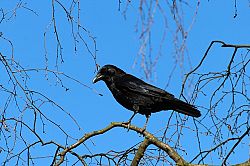

A team of biologists from the University of Exeter have conducted research that suggests that human illumination of the planet is growing by around 2% a year in range and intensity.
They believe the problem can be compared to climate change as hormone levels, breeding cycles, activity patterns and venerability to predators are being affected across several species.
A paper published in the journal Nature Ecology and Evolution outlines that some of the following changes have been detected:
The extend of the impact is assessed as the researchers have brought together 126 previous papers looking at the problems associated with light pollution, named "A meta-analysis of biological impacts of artificial light at night".
Artificial light at night can cause reduced levels of melatonin which regulates sleep cycles, which was found in all of the examined animal species.
Both nocturnal and diurnal creatures had changes in their behaviour, with rodents foraging for shorter periods at night and birds singing and searching for worms earlier in the morning.
Even though the overall effects of light were shown to be disruptive, some species benefited from more light showing that not all of the effects were negative. Some plants grew faster and certain species of bat thrived.
Lead Author, Kevin Gaston, professor at the University of Exeter's Environment and Sustainability Institute said:
"What stands out is how pervasive the effects are. The effects were found everywhere – microbes, invertebrates, animals and plants... We need to start thinking about lighting in the way we think of other big systemic pressures like climate change."
The study concluded:
"The breadth and often strength of biological impacts we reveal highlight the need for outdoor artificial night-time lighting to be limited to the places and forms - such as timing, intensity and spectrum - where it is genuinely required by the people using it to minimize ecological impacts."